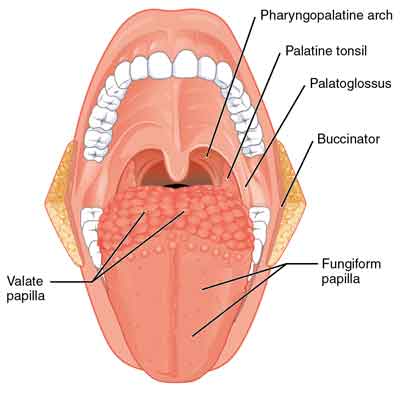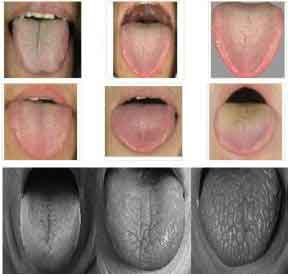Overview
We’re now living in 2018 (21st Century) and now everywhere we can find and we’re using thumb impressions, thumb scans (basically fingerprints). The fingerprints can be used to secure your data, getting an access, view/open any files, prove your actual identity and more. There are so many types of fingerprints as well such as the only thumbprint or all the five fingerprints of any hand. But technology is moving so fast that we can’t even think about. Every animals or mammal have their own tongue and every tongue have their own prints. That means Tongue ID Recognition is as same unique and personal as Fingerprint ID.
We have already seen so much Sci-Fi and Spy movies, that shows so many authorization and unique identification researches and improvements. we love those things to see and we wish if it could be real in future. Just like the fingerprints, our tongue prints are also capable of doing identification and enhanced security implementations. Because our tongue prints are as unique as fingerprints and special too.

Human Tongue Details and Surface
The Tongue is a muscular organ in the mouth of most animals or mammals, which manipulates food for chewing via teeth and swallowing. As it’s the primary thing of digestion and tasting foods. The Tongue works like a taste checker which covered by so many taste buds in ‘Lingual Papillae‘. It’s so much responsive and sensitive just like other nerves and organs and it kept moist by ‘Saliva‘ (supplied by nerves and blood vessels). The most important function of the Tongue is enabling speech in humans and vocalization in other animals. Our tongue is divided into two parts, such as an oral front part and pharyngeal at the back part.
The surface of the Tongue:
The upper surface of the tongue is called the dorsum and it’s divided by a groove into symmetrical halves by the ‘Median Sulcus‘. The Foramen Cecum marks the end of the division which lengths around 2.5 cm from the root of the Tongue and the beginning of the Terminal Sulcus. The Foramen Cecum is also the point of attachment of the thyroglossal Duct and is formed during the descent of the Thyroid Diverticulum in Embryonic Development.
Biometric Identification
A biometric-scanning device takes the individual’s physical data or behavioral data attributes to convert into a digital information form, which can be reached and access the same data whenever required. These identification forms are quite successful and accurate in terms of Fingerprint and Retina scans. These digital scans secure the data up to an extended level without losing any physical thing (cards, drives, keys etc.).
Once an individual’s specific data attribution scanned properly, it is compared with a large number of physical data attributes. In terms of daily usage, it is very easier and effective as well. but researchers are looking for a new medium of security enhancements every time.
Tongue Id Recognition
Every Tongue has different physical aspects like the shape and texture. It is the only organ that is placed inside our mouth (keeps safe). Normally except pulling out our tongue, we don’t do any external work by this. Other security identification forms like eyes and fingerprints are more likely usual and exposed for inspection. Whereas our Tongue is well-formed and secured in terms of data identification and Tongue Id Recognition can’t be used without permission of the individual.
Even if you sleep or doing something else, no one can be easily pulled out your Tongue and scan it normally. As our Tongue is always placed inside the mouth, you can’t leave any Tongue Id Recognition on anything even by mistake. It can’t be copied or mimicked easily like Iris scans and fingerprints.
Attributes Measurement
There are two major attributes are measured for tongue Id Recognition.
- Tongue Shapes
- Tongue Texture / Surface
Tongue Shapes:
Tongue shape is unique to everyone. Some people have the long tongue, some have short tongue and even there are so many varieties in it. Such as narrow tongue, wide tongue, round-shaped, oval-shaped, triangle-shaped etc. These shapes are as unique and very identical to the person as Iris scan and fingerprints.

Tongue Texture:
Another featured attribute is Tongue texture. Every tongue contains different types of surface or texture. That means even your tongue shape and size is similar to someone, but both of the people have different textured surface. The tongue consists of a huge number of taste buds along with wrinkles, ridges, seams, and even unique birthmarks that will retain for the lifetime to every individual.

These physical attributes are recorded by ‘Tongue Image Acquiring Device‘ which is basically a high-resolution camera. There is some tongue image diagnostic software also processed for this. Once the image data captured by the camera then the tongue data processing software, it will compress the attribute data into system file and deliver a processed 3D dimensional data. The ‘Pixel Fusion Technology‘ enabled camera is also capable of clicking images up to every single details and texture of our tongue.
The software also calculates the structural data and provide graph chart, histograms, and other tools for mapping any individual person by their tongue like Fingerprints, Face Id, and Iris Scanning. So whenever it will become popular and accessible like fingerprint and face unlock, you could also use this feature in your smartphone as well. But obviously, you don’t have to touch your tongue. You can unlock or do any work in smartphone via 2D or 3D Tongue Id Recognition Infrared sensor and light sensor.
Till then stay tuned to the Gadget Headline for latest updates. For the latest tech news and reviews, follow Gadget Headline on Twitter, Facebook, and subscribe to our newsletter for daily updates.





